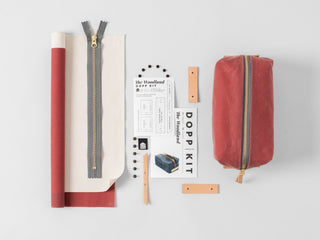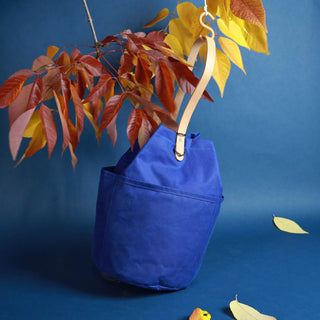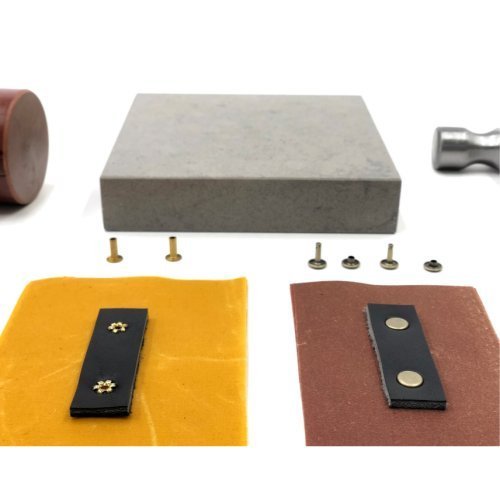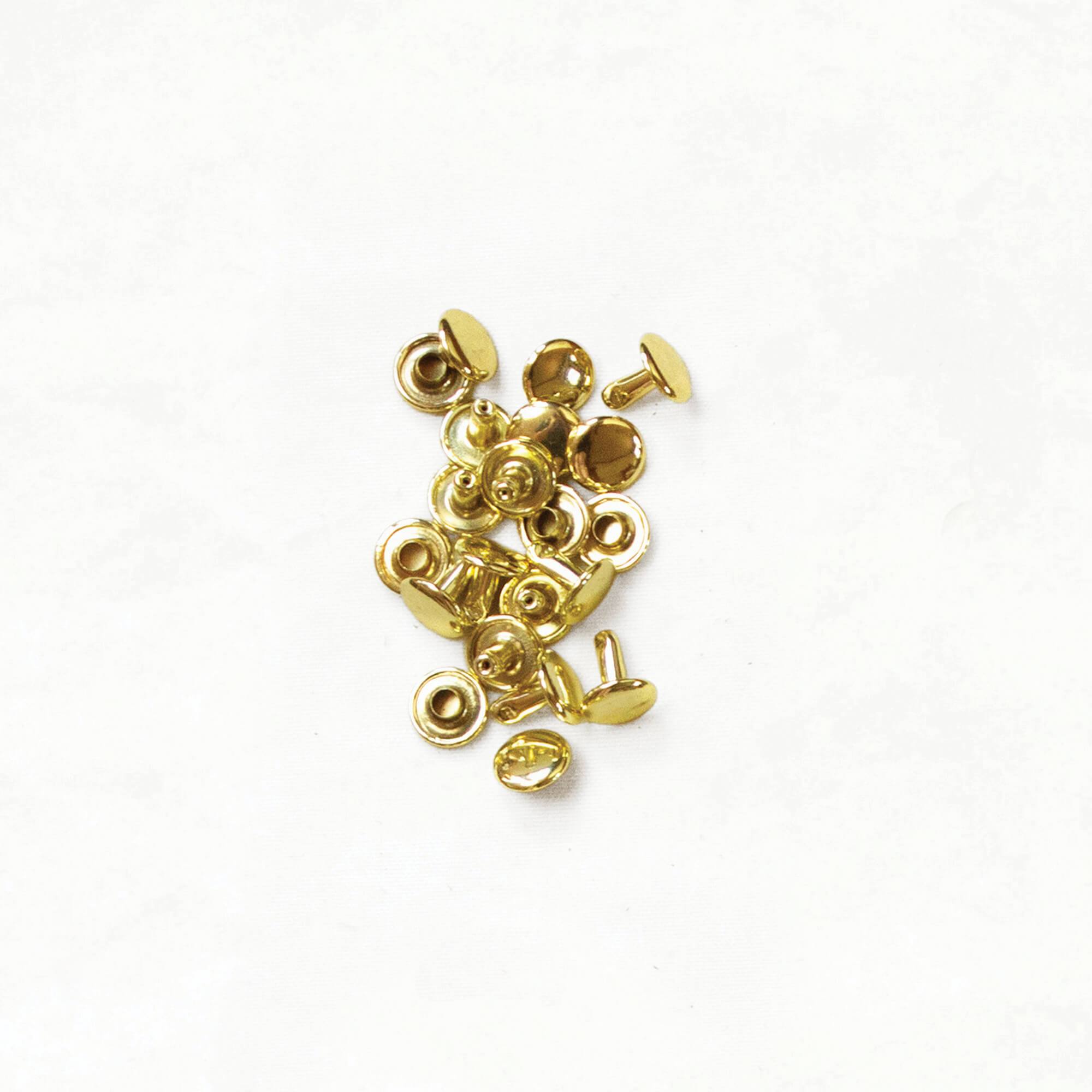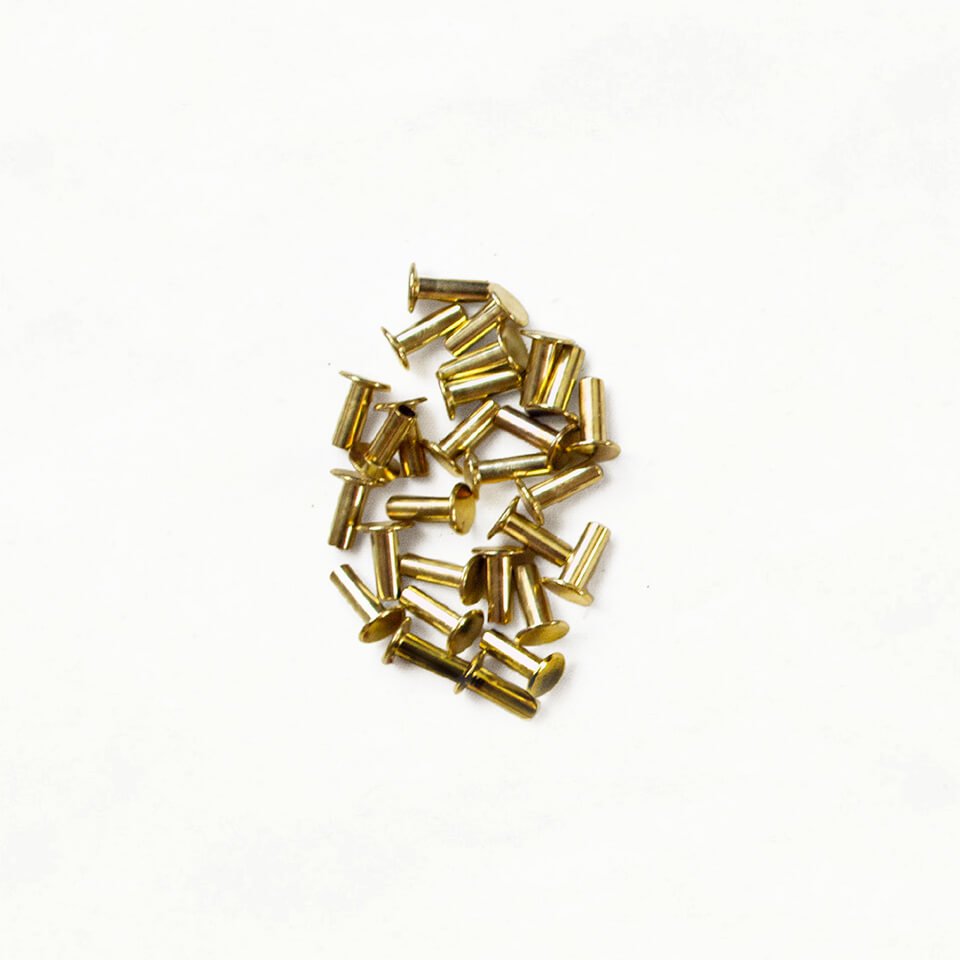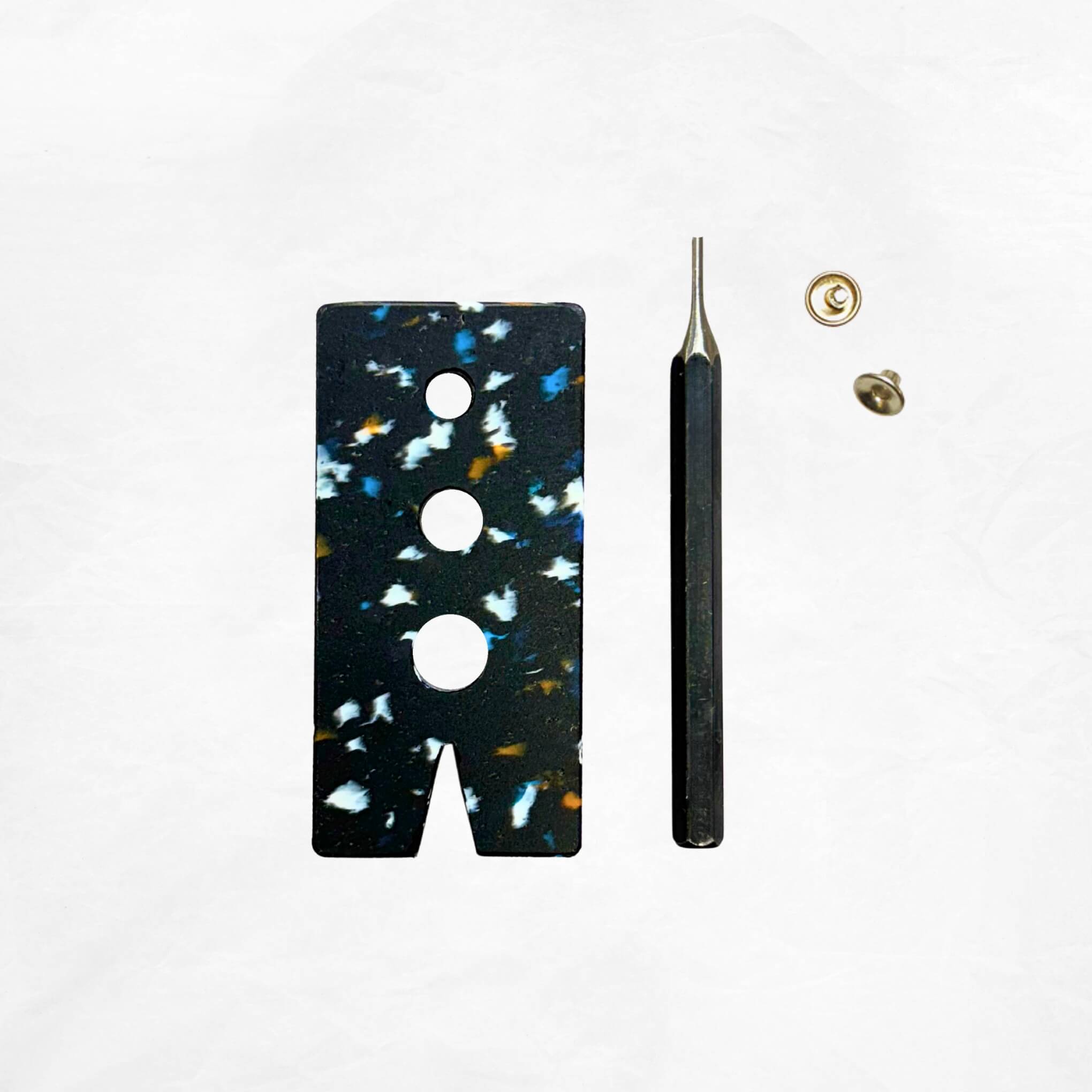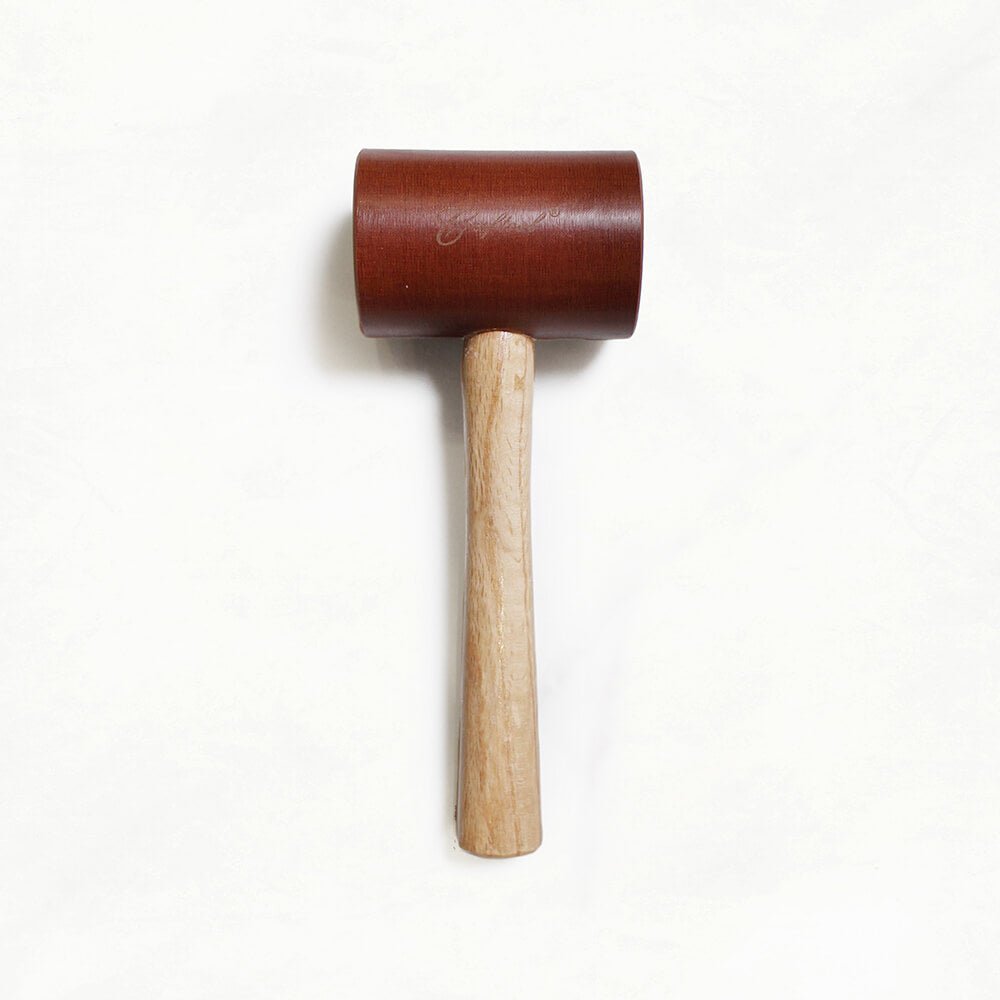Rivets are, hands-down, the most-used piece of hardware in any Klum House bag project. Rivets are metal fasteners that make it possible to attach leather to your bag (like tote straps, handles, and backpack straps) without an industrial sewing machine that can sew through leather. Double-cap and tubular rivets set similarly and serve similar purposes, but there are a few key differences, so we thought we’d break it down for you.

Double-Cap Rivets
Double-cap rivets consist of two pieces: a cap with a post and a second, connecting cap. When force is applied to a double-cap rivet, the end of the post smashes and expands into the cap, creating a strong hold. There are 3 ways that double-cap rivets can be set:

|
1. Striking the cap directly with a metal hammer on top of a hard surface |
 |
2. A rivet setting tool, which consists of a hand-held strike post and a concave dot anvil, that is struck with a mallet on a hard surface (avoid striking metal tools with a metal hammer to preserve them |

|
3. An industrial hand-press with the correct size of double-cap rivet dies |
Tubular Rivets
Tubular rivets consist of just one metal cap and post. They create an extra-strength hold that’s great for heavy-duty bags and weight-bearing straps that need to hold up to a lot of wear and tear. When force is applied to a tubular rivet using a “peening tool,” the end of the post changes shape, creating metal spokes that dig into the leather. The back side of a set tubular rivet looks like a 6-petaled metal flower. There are 2 ways to set tubular rivets:

|
1. Align a tubular rivet peening tool with the rivet post and strike with a mallet on a hard surface |

|
2. An industrial hand-press with the correct size of tubular rivet dies |


